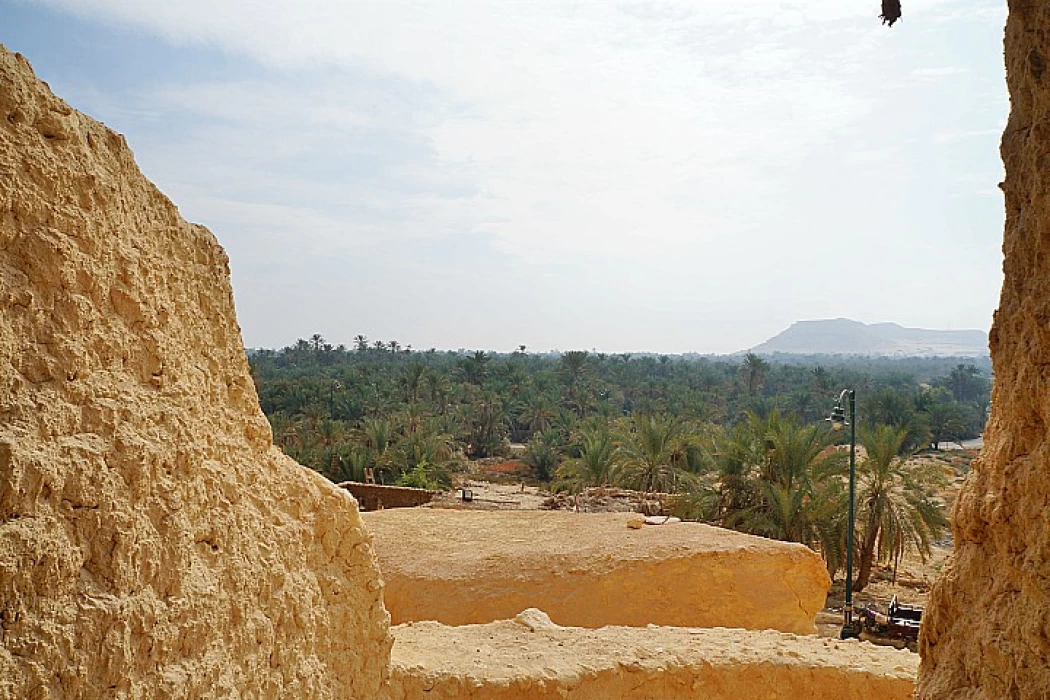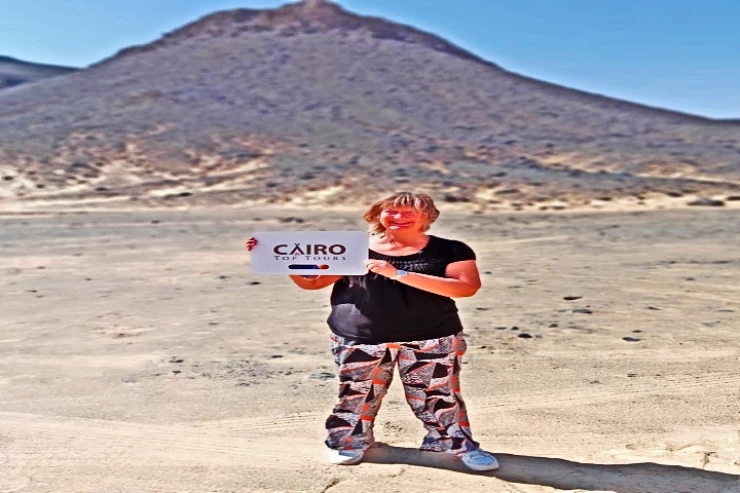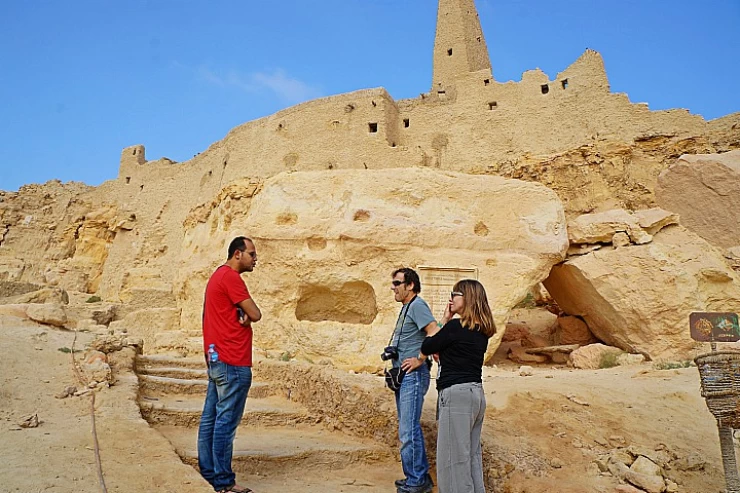
Temple of the Oracle at Siwa Oasis
Facts about Temple of the Oracle
The Siwa oasis lies 593 km west of Alexandria and 302 km from Marsa Matrouh, close to the Libyan border. Access is via an asphalt road from Marsa Matrouh. Siwa lies at the center of a chain of small oases at the end of the Qattara depression. Like Qattara, the oasis lies 24 meters below sea level. Populated by around 15,000 inhabitants, it extends over 80 km in length and 29 km in width. Water is abundant and, due to lack of drainage, can accumulate in lakes with a high salt content.
Siwa boasts beautiful landscapes of dunes, ponds and lakes, reminders of a sea that once covered the desert. Many fossilized shells can be found here. With its many mud-brick villages, Siwa is a great place for walking. The picturesque oasis boasts 300,000 palm trees, 70,000 olive trees and over 300 springs and streams of pure, fresh water. Donkeys make up the majority of the animals, as camels are strangely not allowed to stay here due to a dangerous fly bite.
Constructed in the 26th Dynasty, the Temple of Amun is a magnificent structure whose oracle was highly influential during the Greek and Roman eras. According to one legend, the temple was built in honor of Ham, the son of Noah, by Danaus the Egyptian; another legend relates the temple's foundation to the Greek god Dionysus. Lost in the western desert. Dionysus was dying of thirst, when a ram appeared and guided him to the spring of Agroumi, in gratitude Dionysus erected this temple.
Oracle, the manifestations of God, were highly revered in the ancient world, able to see into the future, they were regularly consulted before important decisions were made, it is thought that Alexander that Alexander the Great wanted proof that he was the son of Zeus from the Siwan oracle. The Greek god of the gods, when he and his entourage arrived, a manifestation of the oracle paraded through the city accompanied by eighty priests, after his visit to the oracle, each time his image appeared on the coin, Alexander was shown with ram's horns, the symbol of Amun, the god of the gods in Egypt.
The temple was famous throughout the Mediterranean world. It was accessed from the south via a first sloping courtyard, built in the axis of the temple. At the start of this slope was a well. This is where processions were held; only a few of the courtyard's foundations remain. Once through the courtyard, you came to an Egyptian-style façade, Hellenized by the addition of two fluted Doric columns, the right-hand one of which is missing.
This brought us to the covered parts of the building: vestibule and sanctuary (or cella) with “sacristy” room, where oracular procedures took place in the presence of the consultant and priests of Amun. The room was covered by a double wooden ceiling. A priest came to stand in the open space before the ceremony, and could access the false ceiling by means of a staircase, through an L-shaped gallery surrounding the northeast corner of the oracle room (as at Karnak and Kom Ombo). To the right of the sanctuary, a small crypt with three niches was used to store cult objects.
The Temple of the Oracle in Siwa, additionally referred to as the Temple of Alexander the Great, is one of the foremost attention-grabbing sites that you simply can see throughout the Siwa Oasis tour from Cairo. The importance of the temple comes from being renowned when Alexander the Nice visited the temple seeking the solution from God Amun that he's the pharaoh son of Zeus (God Amun in ancient Egyptian religion), and he has the ability over the complete kingdom of Egypt within the fourth century B.C.
Vibe of Travelers: Cultural Insights: Investigate the temple remnants and their roles in ancient Egyptian religion and politics. Gorgeous Views: Enjoy some of the stunning vistas from being elevated, perfect for photography and mellow memories-making. Other Places to Visit: You can also use your visit to tell a special story by adding it to some other highlights in Siwa, such as Cleopatra Spring and the Great Sand Sea. To be visited by every history buff, the Temple of the Oracle still gives a taste of the dark side of ancient Egyptian spiritualism within the natural beauty surrounding Siwa Oasis.
The temple was designed throughout the 26th Dynasty within the New Kingdom epoch of Ancient Egyptian history to be dedicated to the Triad of Amun (Amun, Mut, and Khonso). It had been aforementioned that the temple of the oracle was designed over an acknowledge because of the Solar Well, and also the ancient Agurmi Village that was designed from the Kershif technique of building, which is the ancient building technique in Siwa; the kerchief vogue is solely a mixture of clay with salt, which supplies the structure a lot of strength and keeps it cooler from within throughout summer high temperatures.
The star Well of God Amun was aforementioned to be discovered by the Greek deity, the Greek God of Wine, once he was lost within the desert; another story tells that it had been found by 2 monks who had been exiled from the urban center and lost within the desert round the space of Siwa; one amongst the 2 monks was believed to be the one World Health Organization spoke the oracle.
The folks of Agurmi Village left the place when serious rains in 1935 happened and melted-down components of the village, so they settled within the space behind the temple.
The temple was designed throughout the twenty-sixth family line by Amasis to encourage the folks to return and settle within the space of Siwa Oasis to be able to cultivate the land all year long because the underground water, as a result of the Nile River water, rises throughout flood time.
















